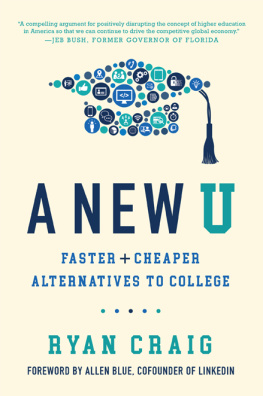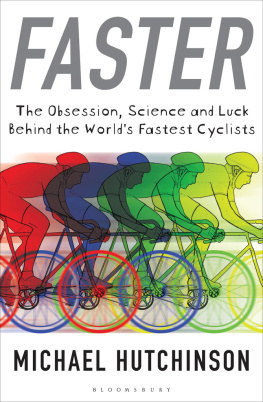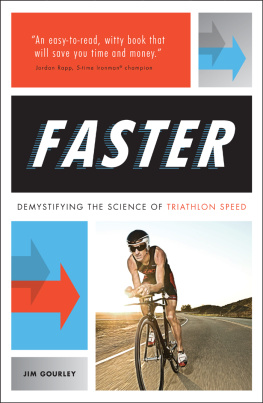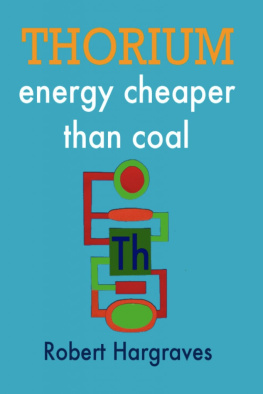SMALLER
FASTER
LIGHTER
DENSER
CHEAPER

Copyright 2014 by Robert Bryce.
Published in the United States by PublicAffairs,
a Member of the Perseus Books Group
All rights reserved.
No part of this book may be reproduced in any manner whatsoever without written permission except in the case of brief quotations embodied in critical articles and reviews. For information, address PublicAffairs, 250 West 57th Street, 15th Floor, New York, NY 10107.
PublicAffairs books are available at special discounts for bulk purchases in the US by corporations, institutions, and other organizations. For more information, please contact the Special Markets Department at the Perseus Books Group, 2300 Chestnut Street, Suite 200, Philadelphia, PA 19103, call (800) 810-4145, ext. 5000, or e-mail .
Book design by Jack Lenzo
Library of Congress Cataloging-in-Publication Data
Bryce, Robert.
Smaller faster lighter denser cheaper : how innovation keeps proving the catastrophists wrong / Robert Bryce.
pages cm
Includes bibliographical references and index.
ISBN 978-1-61039-206-8 (e-book)
1. Technological innovationsPopular works. I. Title.
T173.8.B76 2014
338'.064dc23
2013049381
First Edition
10 9 8 7 6 5 4 3 2 1
For my mother,
Ann Mahoney Bryce
CONTENTS
GRAPHICS
TABLES
PHOTOS
I like Austin Kleons 2012 book Steal Like an Artist: Ten Things Nobody Told You About Being Creative. One of the lines from it resonated with me: Write the book you want to read.
I did that here.
Kleons book is quirky, and the one you are holding is, too. My aim was to make this book inviting and easy to read. Thats why Ive included so many graphics and photographs. I wanted to provide lots of entry points so that even if readers dont capture every word, they can still grasp the key arguments and understand why Im optimistic about the future and why they should be, too.
Before I go further, a note about vocabulary. The word density usually refers to mass per unit of volume. Here Im using a broader interpretation of density, so that it includes population density, agricultural density, and other metrics. Given how critical density is to our culture, we need a broader definition of dense.
One other note about the content: where possible, Ive included metric conversions so that readers from outside the United States, as well as those living here, can have the units being discussed in SI form. (SI is an abbreviation for the System of International Units.) Ive also included a list of SI numerical designations in , as Americans need to get more familiar with the nomenclature.
Now for some acknowledgments. Books, at least in my case, are solo projects. While this was a solo writing effort, it required lots of people to make it happen. As such, I have many people to thank and acknowledge. The people at the Manhattan Institute for Policy Research were wonderful. I joined the think tank in 2010 at about the same time that my last book, Power Hungry, was published. The affiliation has been stimulating and productive. Im bored by the Left-Right, Democratic-Republican, liberal-conservative divide. I want to be with smart people who are promoting economic growth and liberty. Manhattan Institute is packed with smart people who are doing just that. In particular, I must acknowledge Howard Husock, MIs director of research. Howard has repeatedly shown his ability to distill complex arguments into their essential points. My other colleagues at Manhattan Institute, including Larry Mone, Vanessa Mendoza, Michael Allegretti, Matt Olsen, and Bobby Sherwood, were also extremely supportive.
The entire crew at PublicAffairs were, as usual, wonderful. They are all pros. I have been extraordinarily lucky in my book publishing career to have had a single publisher (PublicAffairs) and a single editor. Im proud to call Lisa Kaufman my editor and my friend. Lisa has a genius for being able to read a 90,000-word manuscript, digest the entire thing, and then explain how it needs to be organized to make it better. Shes the best. My other friends at PublicAffairsClive Priddle, Susan Weinberg (whos now the group publisher for Basic Books, Nation Books, and PublicAffairs), Peter Osnos, Melissa Raymond, Tessa Shanks, and Jaime Leiferwere also great. In addition, Collin Tracy did a great job managing the production of the book, and copy editor Jerold Kappes was thorough and patient.
Ive also been lucky to have the same person doing the fact checking on all five of my books. My pal Mimi Bardagjy worked through about a thousand footnotes. She treated each one punctiliously. Better still, she kept her good humor throughout.
Ive had plenty of research help. Grant Huber provided helpful data. My friend Leslie McLain was, once again, invaluable. Yevginy Feyman at the Manhattan Institute was great at providing research and graphics. George Voorhes of Red Barn Muse Creative Group in Portland made the majority of the graphics. I recommend his work without reservation.
While I had plenty of help putting this book together, any errors are mine and mine alone. If you spot a mistake, please let me know so it can be corrected for the paperback edition.
My appreciation also goes to my friend Buddy Kleemeier, who was instrumental in arranging my visit to a drill rig. Hans Helmerich and Rob Stauder were patient tutors regarding drilling-rig technology. Cal Cooper offered valuable perspective on the history of drilling and the ongoing progress being made in that sector. My friends Hill Abell and Frank Kurzawa never tired of talking about bikes and watts. Jan Van der Spiegel at the University of Pennsylvania went out of his way to send me a photo of ENIAC-on-a-chip that he and his students developed about two decades ago. John Fannin and Michael Ramos were helpful in discussing music technology and recording. I must also thank my pal and Web guru Tyson Culver, who has been instrumental in keeping me current in the digital age.
I also want to thank Joe Bruno, Mark Ehsani, Anthony Holm, Rob Manzer, Eric Topol, Anas Alhajji, and Jesse Ausubel. Others who need to be acknowledged and thanked include my longtime friend Robert Elder Jr., who patiently read many different drafts and offered encouragement and insights. Omar Kader, the CEO of Pal-Tech, also made time in his busy schedule to read over a draft of the manuscript. Stan Jakuba, who was a pivotal reviewer of the early drafts of my last book, Power Hungry, was also a sharp-eyed reader. So, too, was Rex Rivolo. Rex has been a friend for many years, and he offered some key technical guidance as I thought about power density. Another friend, Bruce Hamilton, provided guidance on nuclear technology and helped me avoid several errors.
Next page









